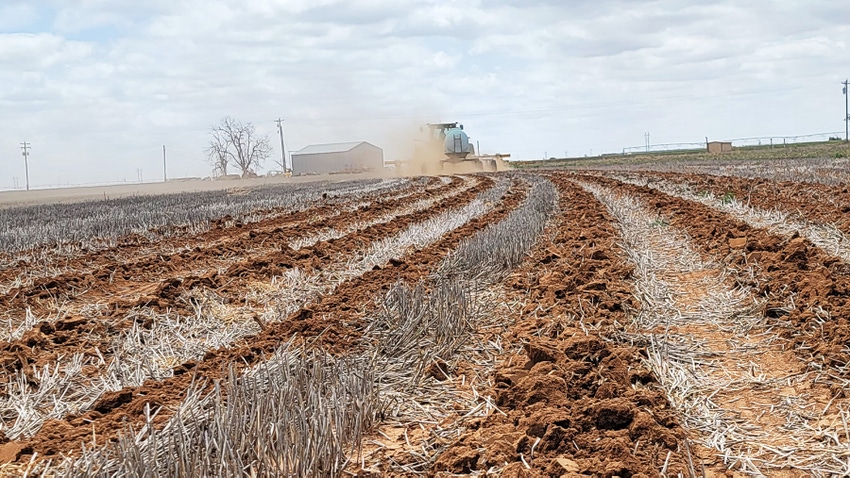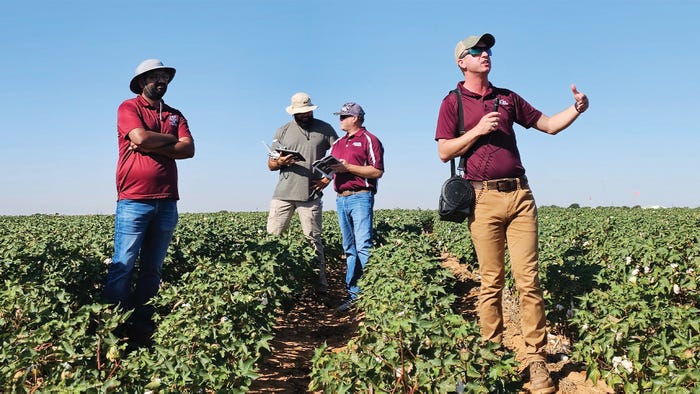
Establishing cover crops pose challenges in the Texas High Plains.
“It's hot, it's dry, it's cold in the wintertime. It's windy at the driest times of the year along with some of the coolest soil temperatures,” said Joseph Burke, assistant professor, cropping systems and weed science, Texas A&M, AgriLife Research and Extension, Lubbock.
Burke spoke on soil and water dynamics in semi-arid West Texas cropping systems at the December Texas Plant Protection Association annual meeting in Bryan, Texas.

Joseph Burke address attendees at the 2023 Regenerative Agricultue field day, Lamesa, Texas. (Photo by Shelley E. Huguley)
“Hot and dry conditions make it a challenge to get cover crops established in West Texas,” he said.
“We plant cotton from mid- to late-May, sometimes into June or July.
“We harvest cotton from October through November and leave it fallow until we plant cotton again the next spring.
“When we try to slip in a cover crop, we have only about four months to get the cover planted, established, and growing enough to stop wind from blowing our West Texas soils away.
“After cotton harvest, we have about two weeks to get the cover crop established before first freeze.”
Cover crop challenges
Challenges continue into spring. “February, March, and April are our windiest months,” Burke said. “Those are also typically three of our driest months and the three hardest months to get anything established to keep soils from blowing. Water will evaporate, regardless of how much we can pull out of the ground. The evaporation value is two to three times greater than any amount of precipitation we might get.
“So, two to three times the amount of water we pull out of the ground and put on the soil surface, will evaporate outside of the system.”
He points out that over time keeping vegetation on the soil improves organic matter and moisture storage capacity.
“We're capturing and storing more water in the no-till system compared to a conventional till system, and that water remains throughout the growing season, and plants have access to the water. Not only are we increasing water capacity, but we're also increasing availability of water.”
It's a far-sighted approach to regenerative agriculture, which Burke defines as “the continued capacity of agricultural systems to function in the changing climate that supports soil health, communities, economic output and environmental sustainability, and resilience to outside threats of these outcomes.
“The number one word based on all of those factors is sustainable,” he said.
About the Author(s)
You May Also Like






